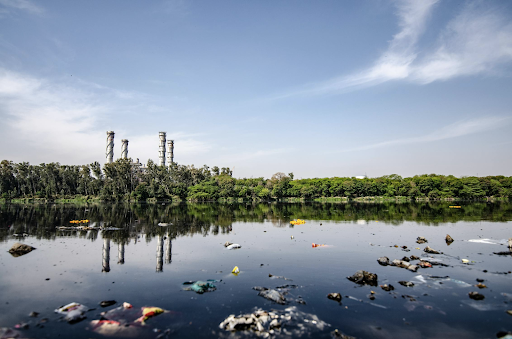
Water contamination is a pervasive issue that can have far-reaching consequences, affecting the environment and the health and well-being of communities. In the United States, cases of water contamination have led to significant legal battles, resulting in monumental settlements.
These settlements aimed to rectify the damage caused and compensate affected parties. They represent a form of justice in the face of environmental harm. But despite the settlements, the problems associated with water contamination still persist. According to usgs.gov, at least 45% of the US tap water system has chemicals such as per- and polyfluorinated alkyl substances, or PFAS.
Understanding Water Contamination
Water contamination occurs when pollutants, chemicals, or toxins enter the water supply, rendering it unsafe for consumption or use. Companies and industrial facilities usually dump these chemicals or toxic contaminants. According to The Hill, 200 million pounds of toxic chemicals were dumped into the US waterways in 2020. In fact, facilities dumped more than 1 million pounds of cancer-causing chemicals, like arsenic, chromium, and benzene.
Sources of contamination can vary widely, ranging from industrial waste and agricultural runoff to chemical spills and improper waste disposal. The consequences of water contamination can be severe, leading to widespread health issues, ecological damage, and economic losses.
In the United States, numerous cases of water contamination have garnered public attention and sparked legal action. From toxic chemical spills to groundwater pollution, each instance of contamination has unique circumstances and impacts. However, what remains constant is the need for accountability and restitution for those affected.
The Legal Landscape
The legal framework surrounding water contamination is complex, involving federal, state, and local regulations designed to protect water quality and public health. Various stakeholders may become involved when contamination occurs, including government agencies, affected communities, and the companies or entities responsible for the pollution.
Litigation related to water contamination often revolves around liability, negligence, and damages. Proving the link between contamination and adverse health effects can be challenging, requiring scientific evidence, expert testimony, and extensive documentation. As a result, legal battles over water contamination can be protracted and contentious, spanning years or even decades.
Landmark Cases And Settlements
Over the years, several landmark cases of water contamination have resulted in significant settlements. Here are some of the landmark settlements in the US history.
Camp Lejeune’s Water Contamination
Camp Lejeune, a United States Marine Corps base located in North Carolina, has a history of water contamination. The contamination primarily stemmed from volatile organic compounds (VOCs) in the base’s drinking water supply. These compounds, including trichloroethylene (TCE), perchloroethylene (PCE), and benzene, infiltrated the water system due to improper waste disposal practices on the base.
The contamination issue at Camp Lejeune spanned several decades, with the earliest documented cases dating back to the 1950s. It wasn’t until the 1980s that the extent of the contamination and its potential health impacts began to receive significant attention. Investigations revealed that the contaminants seeped into the water supply from various sources, including leaking underground storage tanks and waste disposal sites.
The contaminated water supply at Camp Lejeune posed serious health risks to military personnel, their families, and civilian employees stationed at the base. Long-term exposure to VOCs has been linked to a variety of adverse health effects, including cancer, birth defects, and neurological disorders.

Military, their families, and other staff stationed at Camp Lejeune in the said time are filing lawsuits for their health problems. Although the entire compensation amount is not out yet, these lawsuits are expected to create one of the largest settlement amounts in history. In fact, TorHoerman Law states that the Congressional Budget Office has allocated $6.1 billion for Camp Lejeune settlements.
While the total budget is $6.1 billion, the Camp Lejeune lawsuit payout per person depends on various factors. For instance, the severity of the health problems, longevity of exposure, damages, etc., can influence the settlement amount.
The Case of Flint, Michigan
One of Flint, Michigan’s most widely recognized water contamination crises recently occurred. In 2014, the city switched its water supply source to the Flint River, triggering a public health emergency due to lead contamination.
The tainted water exposed residents, particularly children, to elevated levels of lead, resulting in widespread health issues. According to Marketplace, around 100,000 residents were exposed to lead through drinking water, amongst which 9,000 were children.
The Flint water crisis sparked outrage and legal action, leading to multiple lawsuits against government officials and entities responsible for the water supply. In 2017, the State of Michigan reached a $97 million settlement to replace lead pipes and provide healthcare services to affected residents.
While the settlement aimed to address immediate needs, the long-term effects of lead exposure continue to impact the community. According to Bridge Michigan, the residents are still fighting to get the lead pipes replaced. This emphasizes the need for ongoing support and accountability.
DuPont and Perfluorooctanoic Acid (PFOA) Contamination
DuPont faced legal scrutiny over its handling of perfluorooctanoic acid (PFOA), a toxic substance used in the production of Teflon. PFOA contamination affected communities near DuPont’s manufacturing plants, including Parkersburg, West Virginia. Residents exposed to PFOA experienced adverse health effects, including cancer and reproductive issues.

In 2017, DuPont and its spinoff company, Chemours, agreed to a $671 million settlement to resolve thousands of lawsuits related to PFOA contamination. The settlement included funds for medical monitoring and environmental cleanup efforts in affected areas. The case underscored the importance of corporate accountability and heightened regulatory scrutiny of industrial pollutants.
BP Deepwater Horizon Oil Spill
The Deepwater Horizon oil spill in 2010 stands as one of the most significant environmental disasters in U.S. history. The explosion of BP’s offshore drilling rig released millions of barrels of oil into the Gulf of Mexico. This caused extensive ecological damage and economic losses for coastal communities.
According to PBS, around 4 million barrels of crude oil had leaked into the Gulf of Mexico. Due to this, 11 people died in the April 2010 disaster. It is the largest marine oil spill in history.
BP faced intense legal pressure and government fines for its role in the oil spill. In 2016, BP reached a $20.8 billion settlement with the U.S. government and five Gulf Coast states to resolve civil claims and environmental restoration efforts. The settlement represented a landmark agreement to address the environmental and economic impacts of the disaster.
In conclusion, water contamination settlements in the USA represent a critical aspect of environmental justice, compensating and redressing communities impacted by pollution. From Flint, Michigan, to Camp Lejeune, these settlements underscore the importance of holding polluters accountable and advocating for clean water for all.






